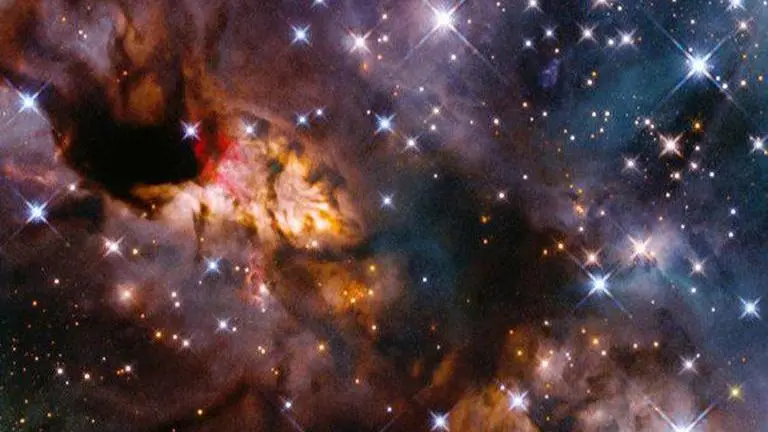Updated 20 November 2021 at 19:30 IST
NASA Hubble releases new image of massive 'Prawn Nebula' stretching 250 light-years
NASA has shared the Hubble image of the prawn nebula which is located about 6,000 light-years away from the Earth. and stretches across 250 light-years.
- Science News
- 2 min read

Adding to the list of jaw-dropping nebula pictures released by NASA this month, the agency has shared another image captured by the Hubble Space Telescope. This time it features the prawn nebula which is located about 6,000 light-years away from the Earth. Stretching across 250 light-years, the nebula is a star nursery in the constellation Scorpius. Check out the image shared below.
Welcome to the Prawn Nebula 🦐
— Hubble (@NASAHubble) November 19, 2021
This newly released Hubble image shows a massive star nursery that stretches 250 light-years across, and is located about 6,000 light-years away: https://t.co/LVxeMUoQR1#NebulaNovember pic.twitter.com/ZoffuQFITC
According to NASA, the prawn nebula covers a space four times the size of the full moon, and is too faint to be detected by Earthbound viewers as it emits light primarily in wavelengths the human eye cannot detect. However, this image by Hubble has captured a small section of the nebula both in visible and invisible infrared light showing dazzling detail of the nebula’s structure, including bright areas of glowing gas.
More about the nebula
The prawn nebula is formally called IC 4628, and it is an emission nebula, meaning its gas has been energized, or ionized, by the radiation of nearby stars. Explaining the glow exhibited by the nebula, NASA said that light is emitted through a process where radiation from the nearby massive stars strips electrons from the nebula’s hydrogen atoms. "As the energized electrons revert from their higher-energy state to a lower-energy state by recombining with hydrogen nuclei, they emit energy in the form of light", the agency added. The small patch of red light in the image indicates the presence of iron which is emitted after ionisation.
This image by Hubble was captured by its Wide Field Camera 3 camera as part of a survey of massive and intermediate-size "protostars". Protostars are objects that are created when the clouds of gas and dust collapse under their own gravitational force, resulting in a dense hot core that starts gathering more dust and gas.
Advertisement
"Astronomers used the infrared sensitivity of Hubble’s Wide Field Camera 3 to look for hydrogen ionized by ultraviolet light ionized by the protostars, jets from the stars, and other features", said NASA. Talking of protostars, the agency had released an image of a protostar residing in a reflection nebula named IC 2631. The image below was taken by Hubble's Wide Field Planetary Camera 2 and is a false-colour representation based on exposures taken in the year 1999.
⭐ A star is (almost) born
— Hubble (@NASAHubble) November 17, 2021
This new Hubble image shows a protostar within the reflection nebula IC 2631. Once the protostar collects enough material, nuclear fusion will begin: https://t.co/XJMFabAR1r#NebulaNovember pic.twitter.com/gaXAAdAfX4
Image: Twitter/@NASAHubble
Published By : Harsh Vardhan
Published On: 20 November 2021 at 19:30 IST
